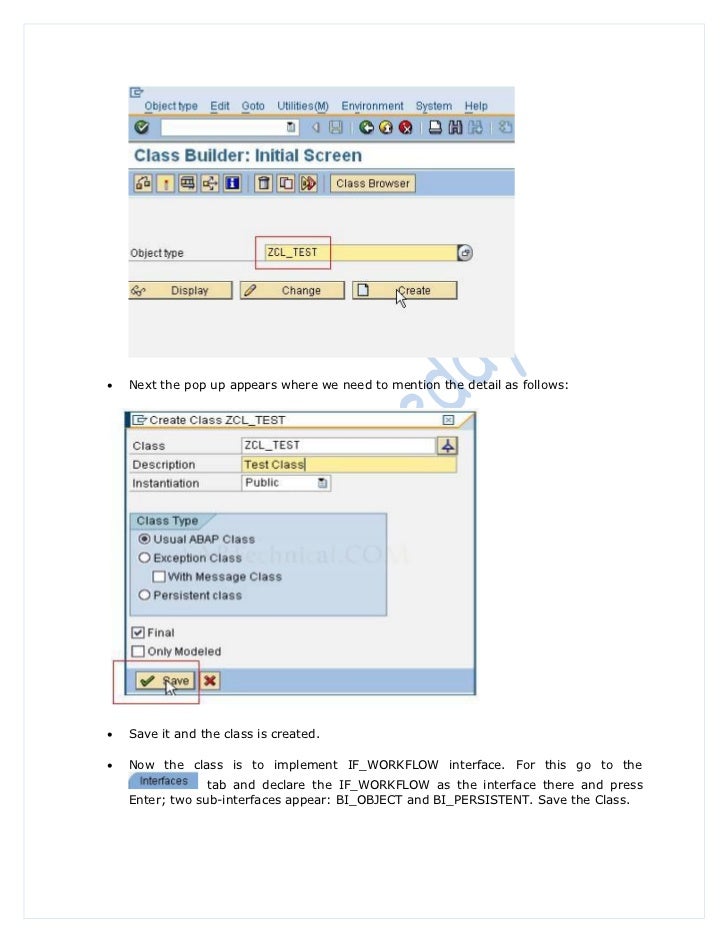Object Oriented Abap Tutorial Pdf
Object orientation simplifies software design to make it easier to understand, maintain, and reuse. Object Oriented Programming (OOP) represents a different way of thinking in writing software. The beauty of OOP lies in its simplicity. The expressiveness of OOP makes it easier to deliver quality software components on time.
Documents Similar To abap-objects-tutorial-for-beginners. Abap Object Oriented Programming Tutorials. Common Errors While Working With Adobe Print PDF Forms. Abap-object-oriented-programming-tutorials.pdf - Ebook download as PDF File (.pdf), Text File (.txt) or read book online.
As solutions are designed in terms of real-world objects, it becomes much easier for programmers and business analysts to exchange ideas and information about a design that uses a common domain language. These improvements in communication help to reveal hidden requirements, identify risks, and improve the quality of software being developed. The object-oriented approach focuses on objects that represent abstract or concrete things of the real world. These objects are defined by their character and properties that are represented by their internal structure and their attributes (data). The behavior of these objects is described by methods (i.e. Let’s compare the procedural and object oriented programming − Features Procedure Oriented approach Object Oriented approach Emphasis Emphasis is on tasks. Emphasis is on things that does those tasks.

Modularization Programs can be divided into smaller programs known as functions. Programs are organized into classes and objects and the functionalities are embedded into methods of a class. Data security Most of the functions share global data. Data can be hidden and can’t be accessed by external sources. Extensibility This is more time consuming to modify and extend the existing functionality. New data and functions can be added effortlessly as and when required.
ABAP was initially developed as a procedural language (just similar to earlier procedural programming language like COBOL). But ABAP has now adapted the principles of object oriented paradigms with the introduction of ABAP Objects. The object-oriented concepts in ABAP such as class, object, inheritance, and polymorphism, are essentially the same as those of other modern object-oriented languages such as Java or C. As object orientation begins to take shape, each class assumes specific role assignments. This division of labor helps to simplify the overall programming model, allowing each class to specialize in solving a particular piece of the problem at hand.
Such classes have high cohesion and the operations of each class are closely related in some intuitive way. The key features of object orientation are −. Effective programming structure. Real-world entities can be modeled very well. Stress on data security and access. Minimizes code redundancy. Data abstraction and encapsulation.
Structure of an ABAP Program Procedural Programming. Information systems used to be defined primarily by their functions: data and functions were stored separately and linked using input-output relationships. Direct access to data Structure of an Objects Object-oriented Programming Model Advantages of Object-oriented Approach. Consistency throughout the software development process.
Encapsulation. Polymorphism. Inheritance ABAP Objects ABAP objects is not a new language, but has been developed as an extension of ABAP.
It integrates seamlessly into ABAP syntax and the ABAP programming model. All enhancements are strictly upward compatible. Principles.
Objects. Classes. Attributes. Methods. Instantiation, garbage collector. Working with objects.
Abap Free Object
Further principles Classes. In this context, abstractions are a simplified representations of complex relationships in the real world.
Object-oriented Abap Programming
An actually existing object is abstracted to the significant dimensions that are to be mapped. Insignificant details are left out in order to aid understanding of the overall system. This example concerns airplanes. Software for airlines and software for an airport’s hangar management contain different abstractions (classes) for these objects.